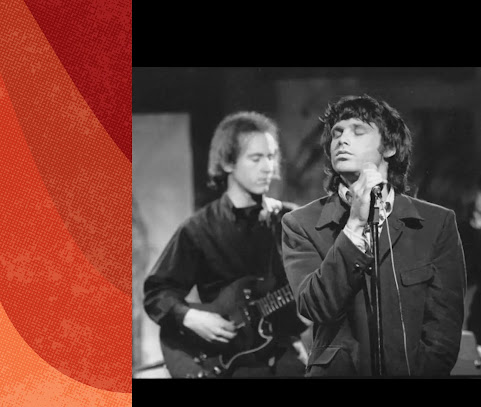THE "WALL OF SOUND" EFFECT IN THE DOORS’ “MY EYES HAVE SEEN YOU”
"My Eyes Have Seen You" is not one of
the best-known songs in The Doors' catalog. This fact is confirmed by the
scarcity of live versions of the tune that the Los Angeles band performed
throughout their career.
The "Strange Days" LP, released on September
25, 1967, on which "My Eyes Have Seen You" appears, features ten
attractive shades of psychedelic rock, corresponding to the ten tracks that
comprise it.
Nevertheless, this song stands out inside the album because
it is less imbued than the others with the effects and sounds that make the
album a masterpiece of psychedelia.
Throughout the notes of this composition, rock emerges
powerfully, overwhelming the psychedelic component and confining it to the
background.
In this way, the song gives a glimpse of the group's
original musical matrix, which was already clearly established in their
previous debut LP.
"My Eyes Have Seen You" also possesses
another little-noticed and little-known peculiarity: its chorus projects toward
the listener, through electric and distorted surges, the saturation of sound typical
of the arrangements made famous by Phil Spector under the name "Wall of
Sound".
In the late 1950s and early 1960s, the American
producer assembled the musical environments of some of the most famous songs by
U.S. female vocal groups.
In these hit singles, the powerful and melodic voices
of singers such as The Crystals or The Ronnettes were silhouetted against
layers of instruments to create a powerful result with a strong impact on the listener.
The meeting of Rhythm and Blues and Pop, which is one
of the main elements of the Soul genre, made these songs little entertainment
gems that remain in the collective imagination to this day.
These tunes developed and arranged by Phil Spector were
supported by several instruments (in addition to lead vocals and background
vocals), ranging from horns to strings, electric guitars, piano, electric bass,
drums and percussions.
Phil Spector used these instruments to stretch out
various musical surfaces and form that “Wall of sound” that was so
characteristic of his style as an arranger and that was capable of catalyzing
the listener's attention from the very first second.
This technique, which aimed to fill every available
space with sounds and instruments, did not allow the parts entrusted to each
musician to be easily distinguished.
In fact, the sound impact overwhelmed and drowned
everything else, even challenging the role of the lead singer.
The "Wall of sound" technique obtained in
this way can be easily traced, among the many examples available, in the 1962
hit "Do Do Ron Ron Ron" or in 1963's "Be My Baby",
which belong to the repertoire of The Crystals and The Ronnettes respectively.
In these songs, Phil Spector stretched out various
musical surfaces to form that “Wall of sound” that was so characteristic of his
style as an arranger and that was capable of catalyzing the listener's
attention from the very first second.
This technique, which aims to fill every available
space with sounds and instruments, does not allow the parts entrusted to each
musician to be easily distinguished.
In fact, the sound impact overwhelms and drown
everything else, even challenging the role of the lead singer.
In The Doors’ “My Eyes Have Seen You”, a kind of "Wall of sound" effect manifests
itself in the choruses, although it does not seem to have been consciously applied
by the band or their producer.
In the refrains, there are six different sound sources
overlapping. They are: vocals, drums, electric bass, two keyboards and the electric
guitar played with two types of distortion.
In particular, the electric bass and the two
distortions of Krieger's guitar fill the air with a pervasive and compact
vibration, like a wall shaken by the electric exuberance that runs through the
tune’s choruses.
These three instruments play the role that Phil
Spector assigned to the woodwinds (especially the baritone and tenor
saxophones) in the songs he arranged during the early sixties.
The last chorus, which leads to the conclusion of
"My Eyes Have Seen You", is also the one where the "Wall of
sound" effect is best recognizable (listen from min. 1.24 at the end of
the track).
We tried to highlight an analogy, almost certainly
unintentional, but suggestive and able to show how the history of music has
cyclically inspired successive generations of musicians.




Comments
Post a Comment